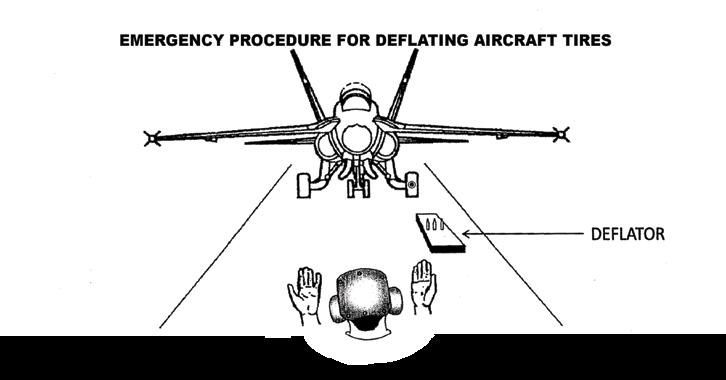
10 minute read
Crossfeed
crossfeed Maintenance Officer CDR. Vernon Hunter vernon.hunter@navy.mil Editorial Coordinators MGSgt. Arthur Hagans arthur.hagans@navy.mil ATCS(AW/SW) Thomas Crook thomas.crook@navy.mil
ALSS Program
A VISION FOR TODAY AND TOMORROW...
By GySgt Steve Dell
Preventing mishaps is a crucial part of everyday aviation operations. It takes keen situational awareness and superior leadership to identify the numerous and potential hazards that exist in every type of environment.
While identification is a must, knowing what to do with the hazard is just as important. I’ve learned to live by this standard: “What do I know, who else needs to know, and out of those, who have I not told?”
A good example is the Engineering Investigation (EI) tool located on the Joint Deficiency Reporting System (JDRS) website www.jdrs.mil. This system lets you request an investigation on components and hardware by engineers.
The findings from investigations lead to different approaches. One approach is to notify the fleet of known
or potential hazards with components or hardware per Type/Model/Series aircraft. Primarily, this is carried out by the issuance of a Technical Directive (TD) in the form of a bulletin requiring a one-time or recurring inspection of like items throughout the fleet and the supply system. This highly effective means of communication could easily result in stopping a bad situation from happening.
Another example of communicating hazards is by initiating a hazard report (HAZREP) on the WebEnabled Safety System (WESS). A link to this site can be found via the WESS tab located at the top of the Naval Safety Center’s website (www.public.navy.mil/ navsafecen. Where the EI tool gets the ball rolling on investigating a problem, a HAZREP immediately notifies other commands of the same Type/Model/Series. The HAZREP describes the event that took place and recommends actions.
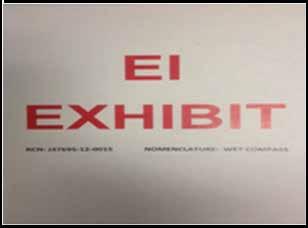
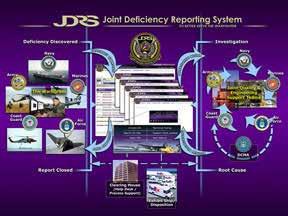
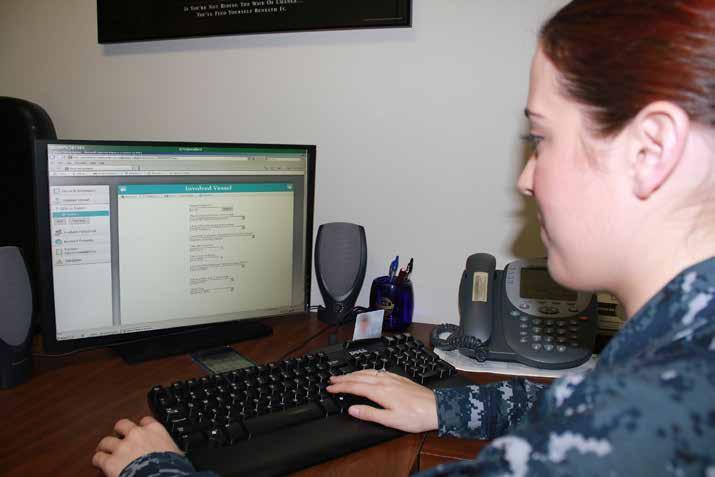
Let’s say your unit finds a bolt with a cracked head. You look at the same bolt on three other aircraft and those are cracked, too. Your Quality Assurance department can initiate an EI and send the bolt to the engineers via the supply system to try to find out what is causing the cracks. This process could take days or weeks to yield a finding. Consecutively, your unit safety officer can initiate a HAZREP identifying the event and recommend other units do a one-time inspection of all like bolts in effort to locate any suspect cracks.
This is merely a recommendation and not a requirement. However, if the EI warrants a one-time inspection via a TD, it is then a requirement.
Using these systems saves lives and heartache. Both systems require account access, which you can get by visiting the websites listed above. JDRS falls in line with the Naval Aviation Maintenance Discrepancy Reporting Program located in chapter 10 of COMNAVFORINST 4790. 2 series. WESS falls in line with OPNAVINST 3750.6 series.
Maintainers need to focus more on JDRS, and the unit safety officer will focus more on WESS. At times, good communication efforts will be required between Quality Assurance and the safety officer in order to complete a HAZREP. Get with your Quality Assurance department and request training on the NAMDRP program and use of JDRS. By taking the initiative to do so, you will further enhance your qualification progression and overall knowledge of your maintenance department’s operations. Make this one of your visions for today and tomorrow.
GySgt Dell is a Power Plants Analyst at the Naval Safety Center
General
The Frozen Middle
By Chief Warrant Officer 5 Dan Kissel

While performing safety surveys throughout the fleet, our Naval Safety Center team often witness junior personnel performing maintenance by memory (no publication or checklist), not wearing PPE and having a lack of basic rating knowledge.
Mech magazine has great articles by mostly junior personnel who write about their mistakes, (often writing about the issues addressed above) the same mistakes we see on the surveys. I often wonder where the leadership was when I read these articles. We all have heard the term “deckplate” leader, it’s in our evals or fitreps expounding on leadership prowess. I know this term is addressed over and over again in packages submitted for promotion boards for I’ve sat on five of them.
We label many supervisors as deckplate leaders, so why is inadequate supervision a major causal factor in mishaps? Class B and C mishaps totaled more than $13 million in FY11, and we have exceeded that amount in FY12. Better supervision would equate to savings.
Leadership is more than wearing a rank device on your collar or sleeve; it is being able to recognize or assess situations and then mitigating and managing the risk associated with them. Who do we want to identify and assess the hazards and risks, an E-3 or a more seasoned leader who has “been there and done that?” One of the principles of ORM is making risk decisions at the right level. Who is making risk decisions in your maintenance department? Is it a leader who is active and is constantly assessing the situation, or one that is just wearing the title?
Leadership is being totally involved in every aspect of your production effort and personnel issues. Standing in the hangar doesn’t automatically make you a deckplate leader. Get involved in what your personnel are doing. Do you know who is having problems such as marital, financial, or health issues. Do we want a Sailor having problems working on an engine or flight controls? Do they know the basic publications for their rate? When was the last time you led training or taught them how to perform a maintenance task? When was the last time you observed or provided training to a maintenance evolution that was going wrong? Are you mitigating or eliminating hazards that can lead to a mishap within your division on a daily basis? A leader needs to know what tools are available and how to use them. ORM is one of those tools and includes TCRM, which is being taught in boot camp to recruits. I often ask our maintenance leaders about TCRM and it’s not unusual to find someone with no knowledge of it. We become antiquated when our young Sailors know more about it than us.
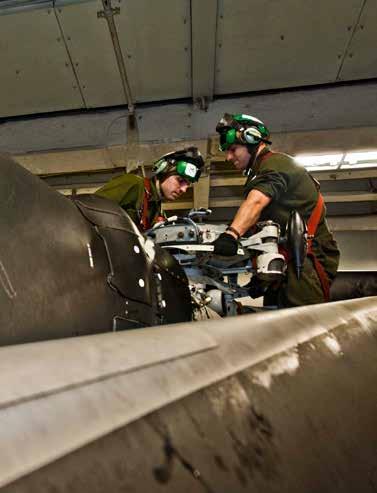
Navy photo by MCSA Scott Youngblood
The CNO, MCPON and all force MCPOs have released POD casts on TCRM, but I’m amazed it is not known by most fleet units. Junior personnel are gaining the knowledge and possibly applying the concept, the officers practice it for their flight planning and missions, but our senior enlisted and more junior LDOs and CWOs still need to get up to speed. I refer to this group as the “frozen middle,” stuck in their ways and not learning new ideas or concepts. ORM is not TQL or any other common buzzword that flies around the Navy. ORM can greatly benefit your maintenance-production efforts if you use it. If you need to brush up on the latest information on ORM or need to review the ORM OPNAV Instruction 3500.39C, look at the Naval Safety Center’s website under the ORM tab.
My fellow LDOs, CWOs and Chiefs, we need your help to prevent future mishaps and successfully complete the mission. I know that we can do it by being engaged. There is not a problem a well-run Chiefs’ mess can’t solve along with the LDO and CWO community. When we are promoted to CPO, the first two letters of our rate remain such as AEC, ADC and AMC. We continue to be the subject matter experts in our field. Reach down to the junior folks and pull them up to your knowledge level and show them how to properly perform maintenance. Most of all, make professional aviation-maintenance technicians out of them.
Chief Warrant Officer 5 Kissel is the Systems Maintenance Branch Head with the Naval Safety Center.
Airframes
When You’re Doing It Right
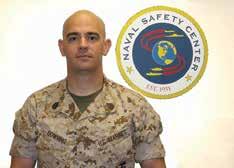
By GySgt Royce Downing
It’s a rare occasion that we at the Safety Center get to tell a unit they have a noteworthy program during a survey. During our survey trip in March to MCAS New River, I came across one such program. This “shout out” goes to the Corrosion Control workcenter of VMM-266, the “Fighting Griffins,” for their hazardous material (HAZMAT) control procedures. SSgt. William Sawyer runs the program for the squadron.
Three things put this unit over the top for me. First, their use of a scale during the check-in and check-out process. This allowed the squadron to track precise use and disposal of HAZMAT and waste.
Second was the training given to the Marines, specifically in the area of Material Safety Data Sheet (MSDS) and unique identifiers. When Marines were asked where to get first aid information for a hazardous chemical, they checked the unique identifier on the HAZMAT container and quickly pulled the correct MSDS and information needed.
Third, their spill kits, which had wheels for rapid deployment. All personal protective equipment (PPE) within the kit was bagged and separated so the responders just grabbed a bag. This means that during a spill, each person would get a bag that had all the required PPE for a spill. This minimized the time it takes to respond to and begin cleaning up HAZMAT spills.
For those of you looking to make your HAZMAT program better take a lesson from SSgt Sawyer. Ensure you know what’s going in and out, train your people for the proper response when something goes wrong and ensure your equipment is readily accessible.
GySgt Downing is an airframes/hydraulic analyst at the Naval Safety Center.
Tires/Wheels
Tire and Wheel Program Emergency Tire Deflator

By AMC(AW) Richard J. Kersenbrock
Let’s talk about some Tire and Wheel Program Safety. More times than not, while on a survey, we see the Emergency Tire Deflators are either locked up in a tool box or not advertised within the spaces as to where it is located. The issue with this scenario is that nobody knows how to find it or nobody outside of the Airframes work center knows how/when to use it. Every now and then we come across a program or a practice that catches our attention as being a “Best Practice”. While on survey at NAS Lemoore, California, we came across a program that grabbed our attention. AM1(AW) Millard Head of VFA-86, the Tire and Wheel Program Manager, devised a way to advertise the emergency tire deflator location and describe the way to properly use it. It includes a visual diagram showing its use, the hazards involved while using it and was posted on all shop doors and hangar exits. The most impressive portion of the idea was the training that accompanied these posters. When junior personnel were asked questions concerning Tire and Wheel/ Emergency Tire deflation, the questions were answered correctly with no hesitation. For those of you looking for ways to improve your program, here is a great practice that you can apply. It is a great example for thinking outside of the box to get the point and the training out to the personnel that need it. Bravo Zulu to Petty Officer Head and VFA-86 for a job well done.
AMC(AW) Richard J. Kersenbrock, is an Airframes/ Corrosion/HAZMAT Maintenance Safety Analyst at the Naval Safety Center.
The emergency tire deflator shown, located in the line shack, is used when normal deflation through the valve core is considered unsafe, or to prevent a wheel assembly explosion. This situation may arise due to overheated brakes, a damaged tire, a damaged valve stem, or when examination of the wheel discloses cracks or missing pieces. The procedure involves laying the tire deflator in front of the discrepant tire/wheel assembly and taxiing/towing the aircraft across the board to puncture the tire and release the pressure. Because of the possibility of a wheel explosion, all personnel and equipment outboard/inboard along the path of the axle should be cleared.
